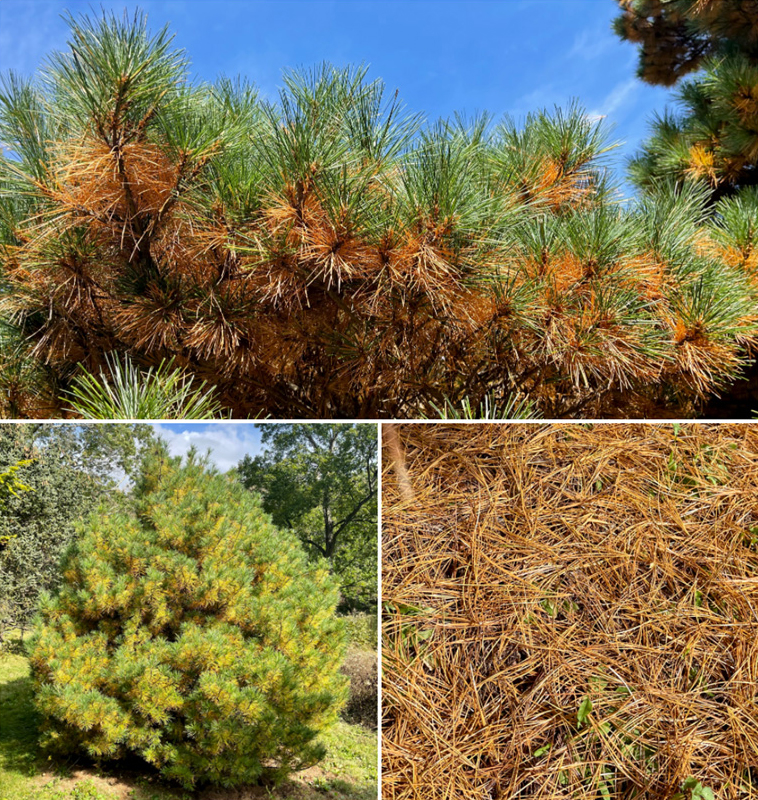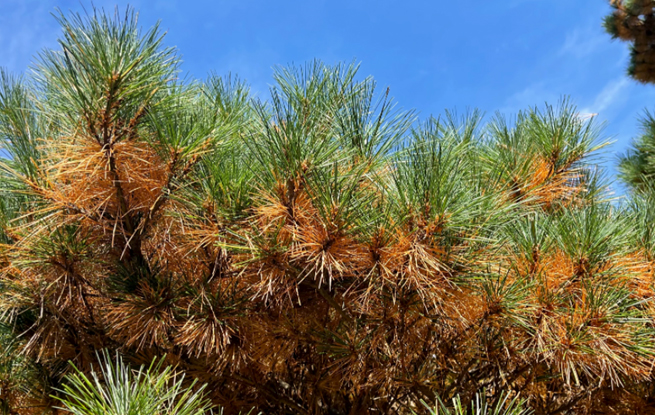A quick note on something you might not have done before, when it comes to leaf peeping in the fall. Although all species of pines are evergreen (meaning that they hold green leaves through at least one winter), it is worth noting that all evergreen plants eventually retire old leaves, often with a strong degree of seasonality. Among pines, needles (leaves) may function for two (eastern white pine, Pinus strobus) to over 40 (Great Basin bristlecone pine, Pinus longaeva) years before being shed.
Right now, eastern white pines are covered with two-year old needles that are bright yellow and in the midst of being released to drift to the ground with each puff of wind. (Recall that in eastern white pines, needles are bundled together in groups of five on dwarf shoots referred to as fascicles.) At first glance, one might mistake the abundance of dead needles on these trees as a sign of disease (lower left, 25-2001*A). But, look closely and you will find the most recent increment of growth (this year’s needles) are perfectly green and healthy (upper image, 12466*A).

The Arnold Arboretum has 590 accessioned eastern white pines, so you won’t have to go far to find one. Or seek out one of the 25 dramatic Korean pines, Pinus koraiensis, whose needles function for three or four years before turning a vivid gold and carpeting the ground underneath (lower right image, 651-93*B). Standing next to or under any of these pines with the sun at an angle is a wonderful experience. And while you are on the grounds, take in the some of the other early fall colors among the roughly 2,100 species of woody plants from around the northern hemisphere that call the Arboretum home.
